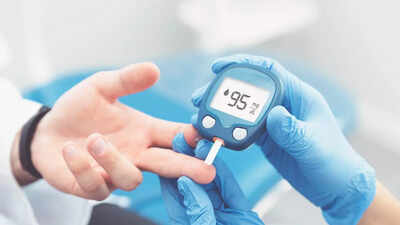
Prediabetes has become an increasingly important area of focus in public health, largely because it sits at a crossroads between normal metabolic function and type 2 diabetes. It is defined by raised blood glucose levels that fall short of the diagnostic threshold for diabetes, yet indicate a shift in how the body processes sugar. This stage often develops quietly, particularly in urban populations where dietary habits, long work hours and reduced movement are common. Although the condition signals an elevated risk, emerging evidence shows that it remains a phase in which the body can still respond positively to sustained lifestyle improvements. Understanding how reversal occurs and why it often takes around two years helps clarify both the biological process and the practical steps that support long-term change.
How metabolic flexibility helps the body reverse prediabetes
Prediabetes develops when the body begins to lose its usual glucose handling efficiency, yet retains enough metabolic flexibility to recover with time and effort. Many people at this stage still show partial insulin sensitivity, particularly in muscle cells, which means that healthier behaviours can help the body use glucose more effectively. By reducing excess calorie intake, improving sleep and incorporating moderate movement across the week, glucose fluctuations become less severe and insulin production faces less pressure. These shifts allow the pancreas and liver to adjust gradually rather than react to constant metabolic stress. Recovery is often subtle and may involve extended periods where progress feels slow, although the internal changes accumulate steadily over months.What this means for metabolic recovery:
- Prediabetes involves impaired but still responsive glucose regulation.
- Partial insulin sensitivity helps the body react positively to lifestyle adjustments.
- Improvements in diet, sleep and activity reduce the strain on insulin production.
- Recovery unfolds slowly, which explains why noticeable change takes time.
Long term evidence showing prediabetes reversal in two years
A decade-long retrospective cohort study from an urban Indian community published in Journal of Diabetes and Metabolic Disorders, examined how prediabetes progressed in real-world conditions. The results demonstrated that many individuals reverted to normal glucose levels within roughly two years when they maintained routine screening and reasonable lifestyle improvements. The study highlighted that dramatic changes were not essential. Instead, the most influential factor was consistency, even when actions were modest. Regular checks kept individuals informed, which helped them stay engaged with their progress, while simple adjustments such as reducing portion sizes or adding short walks had measurable metabolic effects. The study’s timeline of around two years reflects the period needed for pancreatic function, body weight and glucose processing to adapt to healthier patterns.Key insights from the long-term evidence:
- Regular screening helps people track gradual shifts in blood sugar.
- Steady lifestyle adjustments deliver significant metabolic benefits.
- Biological changes in glucose control align with a two-year adaptation period.
- Community-based data shows that sustained habits outperform short-term interventions.
How urban living affects prediabetes reversal
Urban environments create a blend of challenges and opportunities for individuals hoping to reverse prediabetes. Long commutes, high stress and sitting for extended hours often contribute to rising glucose levels. At the same time, cities offer health resources that can support recovery, including nutrition counselling, regular medical facilities, fitness centres and organised screenings. People who manage to integrate small changes into their daily routines, such as replacing processed meals with nutrient-rich alternatives or incorporating regular brisk walking, usually show more stable glucose patterns over time. Even modest shifts create a favourable environment for the body to regulate blood sugar more effectively, especially when combined with periodic check-ups that track progress and encourage accountability.How urban factors influence reversal:
- City living contains risk factors such as inactivity and high stress but also valuable health resources.
- Small behavioural shifts, like daily walking, help improve glucose management.
- Access to medical guidance and screening increases the likelihood of reversal.
- Habit formation across two years helps counter the metabolic effects of urban routines.
How the body adapts slowly during prediabetes reversal
Reversing prediabetes takes time because metabolic function adapts gradually, not instantly. When individuals increase physical activity, their muscles become more capable of pulling glucose out of the bloodstream. Meanwhile, long-term improvements in diet reduce stored fat in the liver, lowering insulin resistance and giving the pancreas the support it needs to produce insulin more efficiently. Fat tissue itself undergoes changes, becoming less inflamed and more responsive to hormonal signals that regulate glucose. These internal adjustments require continuous reinforcement, which is why brief bursts of effort followed by lapses tend to halt progress. Consistent behaviour is the most reliable driver of improvement, and the two-year timeframe mirrors the natural pace at which tissues recover healthier function.Important take-homes about long-term adaptation:
- Muscles, liver and fat tissue depend on repeated signals to improve glucose handling.
- Long-term behaviour patterns produce more durable results than short, intense efforts.
- Insulin sensitivity recovers slowly, which aligns with the two-year reversal trend.
- Gradual biological readjustment makes consistent lifestyle habits essential.
How shared routines and guidance help sustain improvement
Reversal of prediabetes also depends on the environment surrounding an individual, not just personal habits. Access to supportive community networks, group-based wellness activities and culturally relevant dietary guidance can make lifestyle shifts easier to maintain. Many people benefit from social reinforcement, whether through neighbourhood walking groups, workplace health initiatives or family routines that encourage more balanced meals. These forms of support help individuals stay motivated across the long period required for the body to readjust. Health systems that offer regular follow-up visits, early screening and clear communication further increase the likelihood of improvement, particularly in settings where diabetes risk is widespread and long-term prevention is a public health priority.What strengthens the chance of reversal:
- Social support helps people maintain lifestyle changes consistently.
- Group activities and shared routines create accountability.
- Regular follow-up visits reinforce long-term motivation.
- Community access to health education strengthens early prevention efforts.
Disclaimer: This article is for informational purposes only and should not be considered medical advice. Please consult a healthcare professional before making any changes to your diet, medication, or lifestyle.Also Read | Could a low-glutamate diet help reduce migraines for people living with frequent headaches








